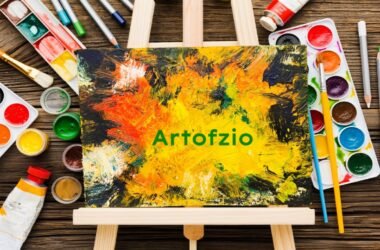Raja Ravi Varma paintings are celebrated for their unparalleled fusion of European realism and Indian aesthetics. This iconic artist left an indelible mark on Indian art, influencing generations with his masterful depictions of mythological themes and cultural heritage. His work continues to inspire art lovers worldwide, symbolizing a timeless connection between tradition and modernity.
The Life and Legacy of Raja Ravi Varma
Raja Ravi Varma, born in 1848 in Kilimanoor, Kerala, revolutionized Indian art. By blending Indian iconography with Western techniques, he created paintings that resonate with universal appeal. Despite his royal lineage, Varma’s journey in art was driven by passion and dedication.
He mastered oil painting, a medium less explored in India at that time. His distinct style earned him the title “Father of Modern Indian Art,” and his works became synonymous with Indian culture.
A Revolutionary Approach to Indian Art
Varma’s innovative methods bridged the gap between traditional Indian art and Western realism. While Indian miniatures focused on flat imagery, his paintings introduced depth, perspective, and lifelike details.
By popularizing oil painting in India, he made art more accessible. His prints, especially of Hindu gods and goddesses, reached the masses, creating a visual identity for Indian mythology.
Key Features of Raja Ravi Varma Paintings
Fusion of Styles
Raja Ravi Varma paintings seamlessly combined Indian mythological themes with European techniques. His use of light and shadow added a dramatic effect to his compositions.
Mythological Themes
Depictions of gods, goddesses, and epic scenes from the Mahabharata and Ramayana were central to his work. Paintings like Shakuntala Patra Lekhan and Lady with a Fruit exemplify his talent for storytelling.
Elegance and Realism
Varma’s works are characterized by their intricate details and realistic portrayals of human emotions. His paintings often reflected the elegance of women adorned in traditional attire.
Famous Raja Ravi Varma Paintings
Shakuntala Patra Lekhan
This masterpiece captures Shakuntala from the Mahabharata writing a letter to her beloved, King Dushyanta. The delicate expression and natural setting create a captivating scene.
Hamsa Damayanti
A scene from the Mahabharata, this painting portrays Princess Damayanti conversing with a celestial swan. The painting highlights Varma’s expertise in depicting intricate emotions.
Lady with a Fruit
This iconic piece is celebrated for its simplicity and beauty. The artwork reflects the elegance of Indian women.
Jatayu Vadham
A dramatic portrayal of Jatayu, the divine bird from the Ramayana, sacrificing himself to save Sita, showcases Varma’s ability to depict action and emotion.
Impact on Indian Culture
Reviving Mythology
By giving visual form to Indian epics, Raja Ravi Varma made mythology relatable to the common man. His work has been instrumental in keeping these stories alive.
Mass Production of Art
Through lithographs, his art became accessible to people from all walks of life. Temples and homes across India adorned walls with these prints, bridging the gap between high art and popular culture.
Inspiring Indian Cinema
His works have influenced the visual language of Indian films. The aesthetic appeal of mythological films can be traced back to the grandeur of Varma’s paintings.
The Techniques Behind the Masterpieces
Oil on Canvas
Varma was among the first Indian artists to adopt oil painting. This medium allowed him to create depth and texture, bringing his subjects to life.
Attention to Detail
Every element in his paintings, from intricate jewelry to flowing sarees, was painted with precision. His works are a testament to his dedication to realism.
Use of Symbolism
Varma often used symbolic elements to enhance the narrative. For instance, the swan in Hamsa Damayanti symbolizes purity and divinity.
The Enduring Appeal of Raja Ravi Varma Paintings
Even decades after his death, Varma’s works remain timeless. They are studied in art schools, exhibited globally, and continue to inspire contemporary artists.
Global Recognition
His paintings have been showcased in prestigious galleries worldwide, cementing his place in art history.
A Source of Inspiration
Modern artists draw from his techniques and themes, ensuring his legacy endures.
Preserving the Heritage
Efforts to restore and preserve his paintings highlight their historical and cultural value. Organizations and museums have undertaken projects to protect his works for future generations.
Conclusion
Raja Ravi Varma paintings are more than just artworks—they are a gateway to India’s rich cultural and mythological heritage. By blending traditional themes with modern techniques, Varma created masterpieces that transcend time. His contributions to Indian art continue to inspire, proving that true art knows no boundaries.







